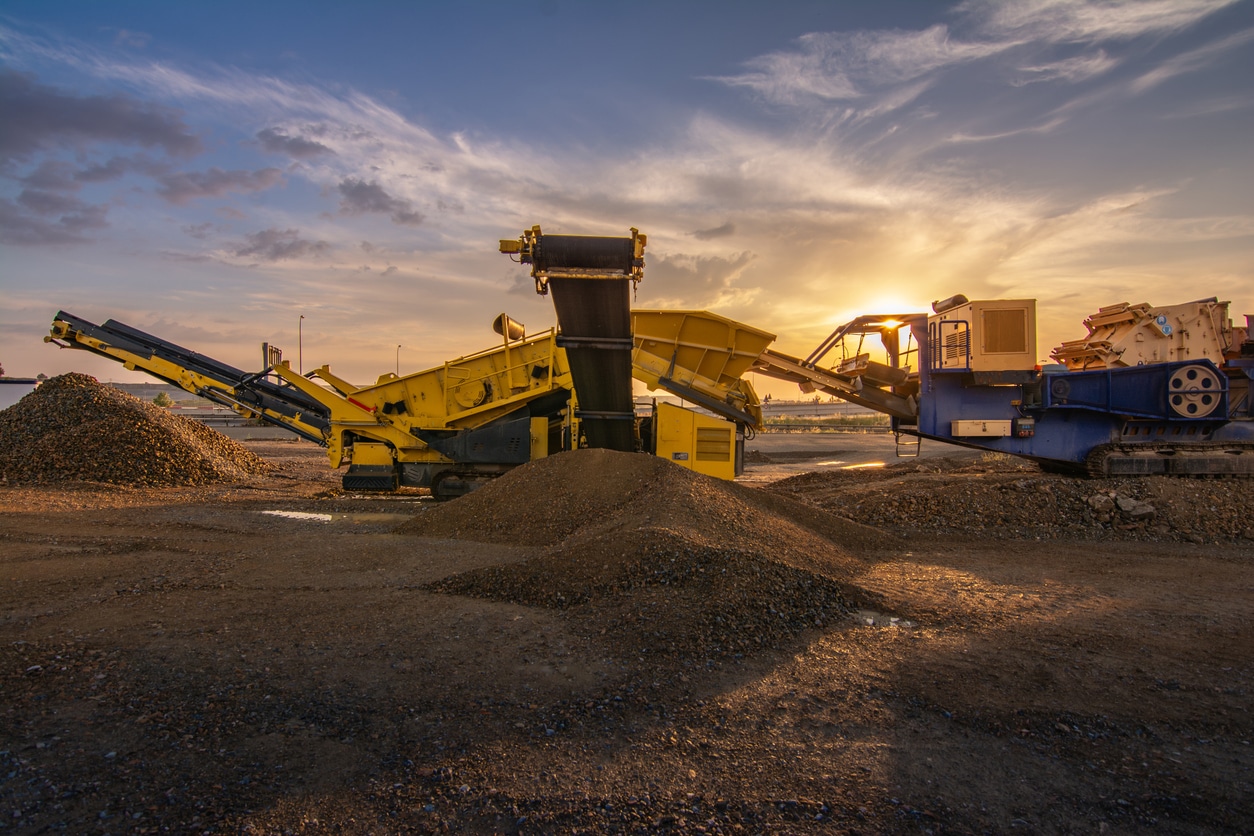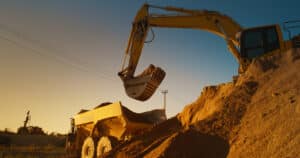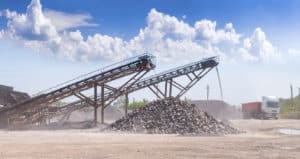
The aggregate industry has ancient roots. As long as there has been construction, people have used aggregates to complete their projects. The ancient Egyptians added sand to the bricks used to build many of their temples, and the Romans used sand and stone in concrete the way we do.
However, despite its deep history, aggregates remain a dynamic industry, constantly in flux. It is important for anyone in the industry to be aware of the latest trends in the industry. Here are some of the most recent developments that are shaping the aggregate industry.
Strong Continuing Growth
One of the most important underlying factors in the aggregate industry is an overall growth trend. This is expected to continue for the foreseeable future, with all projections for the next decade estimating growth in the sector ranging from 5.7% to 6.7% per year. As long as there is construction, aggregates will be in demand.
However, as we’ll see, there are a number of factors that could potentially undermine this long-term growth trend.
Inflation Effects
 One of the biggest potential dangers to growth in the aggregate industry is the effects of inflation. Aggregate prices have gone up more than those in the overall US economy. In the US, aggregates saw a 38% increase in prices from 2020 to 2024, an average of 8% annual growth, according to the US Geological Survey (USGS). This is much higher than the overall US inflation rate of 20% over that period.
One of the biggest potential dangers to growth in the aggregate industry is the effects of inflation. Aggregate prices have gone up more than those in the overall US economy. In the US, aggregates saw a 38% increase in prices from 2020 to 2024, an average of 8% annual growth, according to the US Geological Survey (USGS). This is much higher than the overall US inflation rate of 20% over that period.
Although demand for aggregates is – like most aggregates themselves – inelastic, even the hardest commodity can’t help but crumble a bit under that level of economic pressure, and in the US demand for aggregates fell slightly in 2024. Crushed stone saw a 3% decrease in consumption, while consumption of sand and gravel fell by 8%!
Asia Leads Growth
With aggregates declining in the US, where are the overall projections of growth coming from? Primarily Asia, Africa, and the Middle East.
China is the largest consumer of aggregates in the world. They account for nearly half of the aggregate consumption in Asia, followed by India and Japan.
Although China sees construction as key to its economy, an ongoing real estate crisis, which could be worsened by an escalating trade war, could undercut demand and reduce the scale of the country’s aggregate consumption. Similarly, India’s growth in aggregate consumption is based on the Smart Cities Initiative, kicked off by Prime Minister Narendra Modi in 2015, and scheduled to wrap up this year. Whether the initiative will be allowed to expire or if it will be extended or expanded remains to be seen.
Tariff Dangers
Aggregates are one area of the US economy where domestic production dominates. According to USGS figures, domestic production accounts for more than 99% of aggregate consumption. So aggregates themselves are not at risk from tariffs.
However, demand for aggregates can be impacted by macroeconomic impacts of tariffs and the uncertainty surrounding them. Inflation in 2022 and 2023 slowed and then cut the demand for aggregates. If tariffs push inflation higher in 2025 and beyond, the industry may take another hit in the US. In addition, although aggregates are not imported, much of the equipment used in the aggregate industry is imported. This could drive costs higher again, leading to price increases that could sink demand even further.
Pause in Government Spending
As inflation dropped the bottom out of residential and commercial demand in 2022 and 2023, the sector was bolstered by federal funding. Legislation passed under both the Trump and Biden administrations created robust demand for aggregates in large-scale construction projects, especially infrastructure.
This means that potential freezes in government spending, coupled with commercial and residential demand suppressed by inflation could lead to major trouble in the industry.
AI and Aggregates
 Although most of the developing trends threaten to push aggregate demand down, one potential bright spot is artificial intelligence (AI). So far, AI impact in the industry is limited, but is poised to increase, which could potentially lead to increases in operational efficiency. This could combat some of the cost increases from tariffs.
Although most of the developing trends threaten to push aggregate demand down, one potential bright spot is artificial intelligence (AI). So far, AI impact in the industry is limited, but is poised to increase, which could potentially lead to increases in operational efficiency. This could combat some of the cost increases from tariffs.
Meanwhile, the other construction trend driving aggregates is how resource-intensive AI is. Construction of new data centers, power plants, and other infrastructure to support the growing use of AI could offset slackening demand in other areas.
Aggregate Equipment for the Best and Worst of Times
With the diverse factors at play right now, it’s hard to know whether to expect strong growth or contraction in the aggregate sector in the near future. Most likely, we’ll see a mix of both, and which trend seems to dominate the industry from your perspective may be due to a mix of factors, such as preparedness, planning, and more than a little bit of luck.
No matter how your aggregate firm is faring during the current economy, Power Screening can help. If your operation is expanding, and you need new aggregate equipment, we offer a full selection of leading tools, including screens, rock crushers, and earthmovers. On the other hand, if your operating budget is tight, we offer alternatives. We sell used aggregate equipment and have equipment for rent if you think you might need a tool for just one or a few jobs. We also offer maintenance so that you can get a few more years out of your aging aggregate equipment if you need to.
Power Screening is an aggregate equipment dealer ready to help your company no matter how the current economy is treating you. We’ve been helping aggregate companies weather the uncertainties of the economy since 1984, and we’ve helped many of our clients survive the toughest times so they could thrive when conditions improved.
To learn about solutions tailored to your needs, please contact us today.
